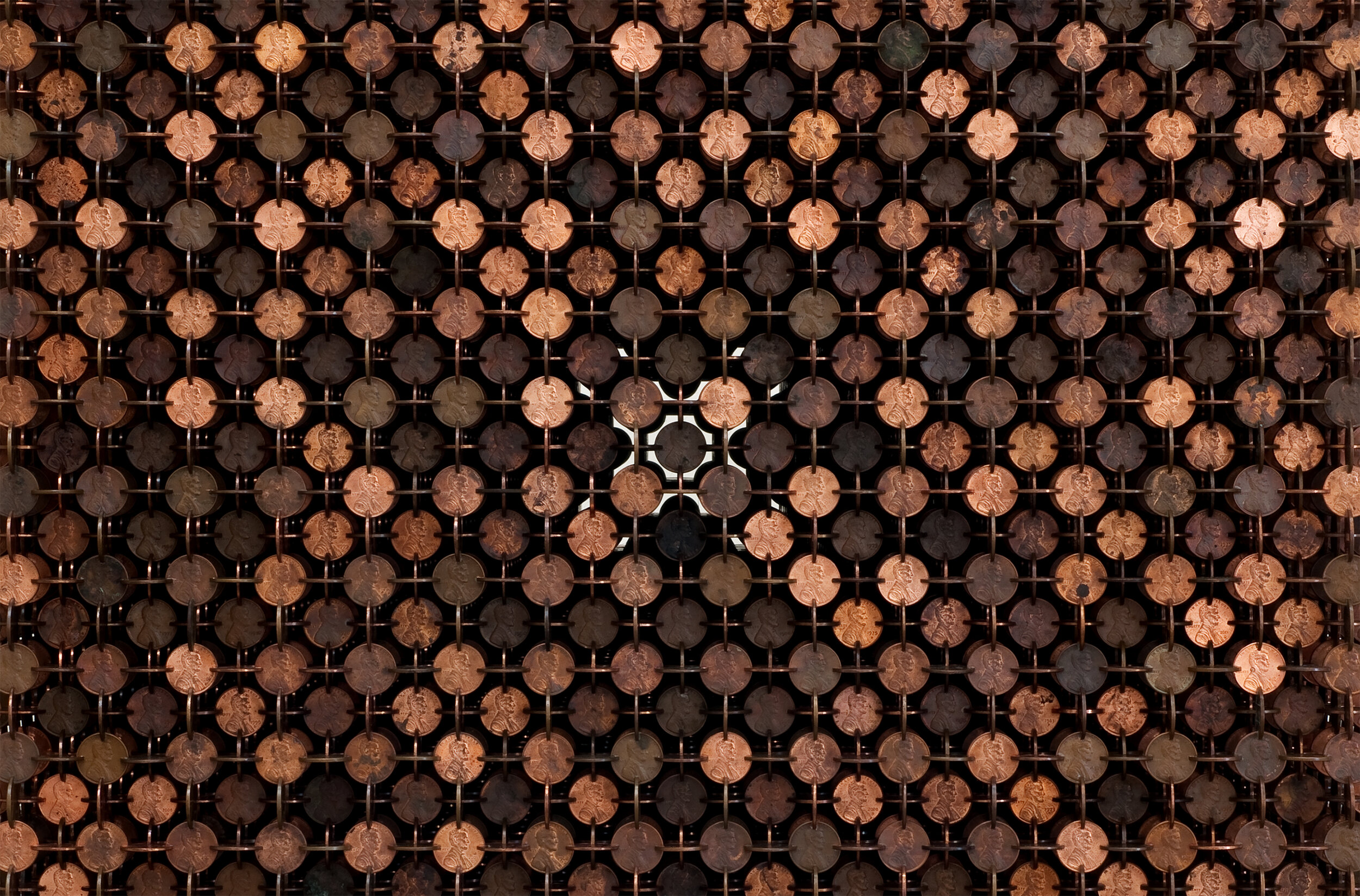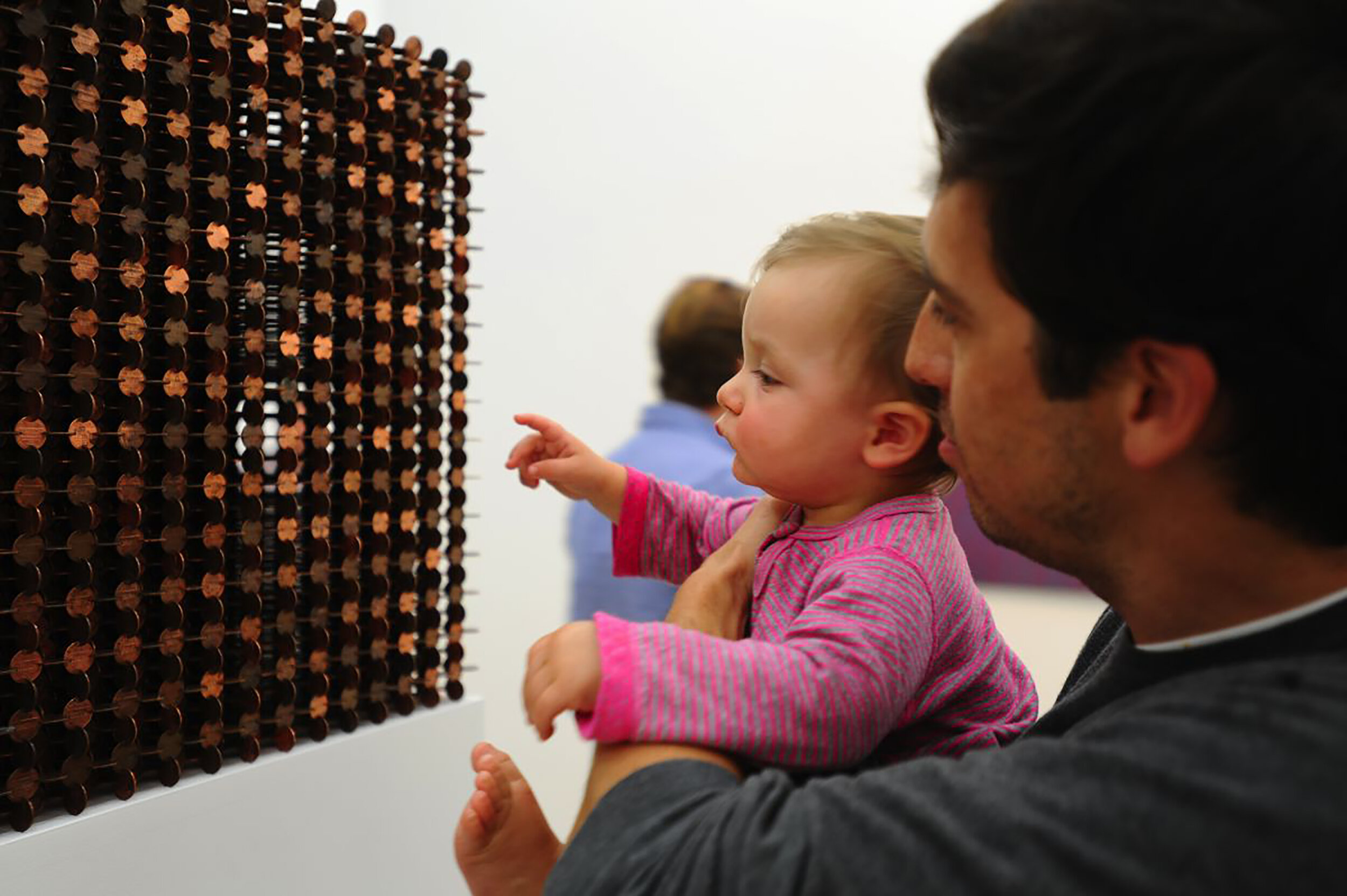








The Mendicant
US Pennies (1959-2012)
21″ cube, 11″ cube, 5.75″ cube
October 2012
Cubes achieved by notching and joining pennies in perfect orientation to one another. Joined at perpendicular angles, the coins create a lattice structure allowing tunnel like passages of light from certain angles. As one moves around them, the cubes seem to fluctuate from material to ethereal.
The number of pennies increases exponentially with the size of the cube. Pictured here are three cubes differentiated with subtitles indicating the exact quantity used.
The Mendicant 26,982 includes pennies from all years featuring the Lincoln Memorial (1959-2008). The Mendicant 3,672 includes Lincoln Memorial pennies prior to the shift from copper to zinc production (1959-1982). The Mendicant 540 was built from pennies retrieved from a wishing well. The colorful patina of these coins is the result of exposure to the water and chemicals over time.
With fifty billion currently in circulation, the penny is one of humanity’s most numerous objects, but despite its commonality, it is an extraordinarily rich artifact. As a symbol of American culture, it is on par with the Statue of Liberty. It is a monument to a beloved president. It is a proclamation of a national faith and creed. It is a time stamped record of our civilization. As much ornament as legal tender, the penny is equal parts form and function. It defines elegance just as its ubiquity, low monetary value, and high symbolic value defines humility.
Mendicant is a term for one who has no possessions, is supported by the goodwill of others, and relies exclusively on charity to survive. Typically a position assumed after living a productive life and attending to all worldly concerns, a Mendicant is considered honorable. To be a Mendicant is to make a conscious choice to sacrifice conventional concerns in favor of humility, modesty and enlightenment.
Special thanks to Michael Hernandez, Molly Mahar, David Ozar, Chris Stewart, Matt Wechsler and Laura Zahn for their moral support, mental contributions and physical assistance, which made this project possible.
